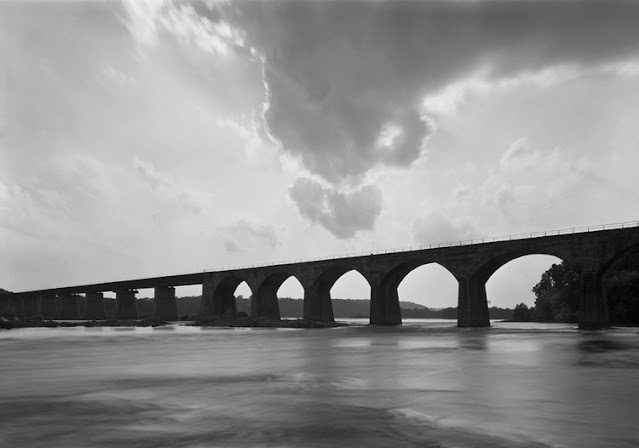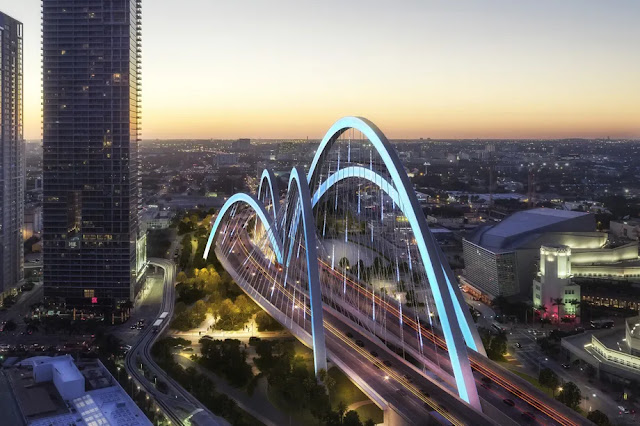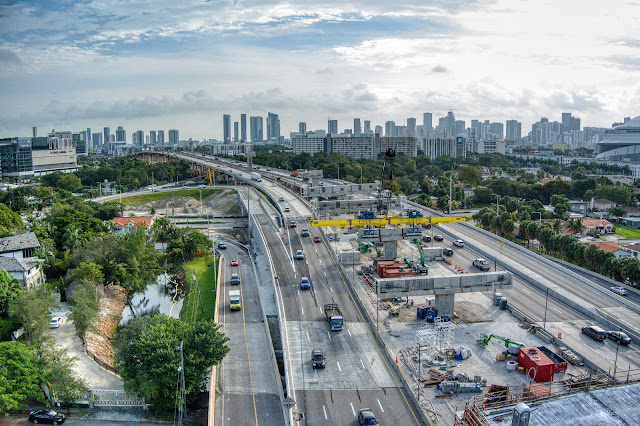The steel girder spans in the middle are the repairs made for the July 2, 1972, flood damage caused by Hurricane Agnes.
 |
| D Blood, May 20221 |
 |
| michaelfroio "The 28 arch stone bridge was over 2200 feet long spanning the Susquehanna River with trains riding approximately 60 feet above low water." |
 |
| safe_image for Jay Miller Flickr Ray Brunner: The bridge was partially destroyed in the 1972 hurricane Agnes flood. Note the replacement spans. Mike Froio: Ray one of the only major failures of a PRR stone arch bridge. From what I’ve read this bridge had issues well before Agnes. Even during construction Shocks Mills required additional shoring as the piers had issues. |
The Pennsy Chief Engineer William H. Brown sure liked stone arch bridges. At first glance, I thought this was the Rockville Bridge. Fortunately, I read the comment and realized that this was a different bridge. "Until settling compromised a pier on the Rockville bridge in 1997 this [flood repair] would be the only major failure on record of the proven and sturdy construction methods Brown used during his 25 year tenure as Chief Engineer." [michaelfroio]
 |
| James Klyeman posted Shocks mill bridge lancaster co. Pa Rob Nichols: One of the best views I've ever seen of Shocks Mill bridge. Here we can see the deck girder spans at the opposite end that replaced the arches washed out by Hurricane Agnes in 1972. Further upstream at Harrisburg the river is wider so the flow wasn't as concentrated which allowed the Rockville and Reading bridges to survive. Sadly now NS is following the old Conrail policy of refusing to maintain Rockville bridge and assuring that it will fall apart. |
 |
| Photo via VisitPaDutchCountry, this site has several closeup photos of the bridge |
 |
| William VanZee, Aug 2019 |
 |
| proveng |
 |
| Metrotrails posted Northwest Lancaster River Greenway passing b Shocks Mill Bridge over the Susquehanna River near Marietta Pa. Completed in January 1905 for the Atglen and Susquehanna Branch of the Pennsylvania Railroad, the 2209 ft bridge originally encompassed 28 stone arches. It is often referred to as the Enola Low Grade Line. In 1972, flooding from Hurricane Agnes destroyed 9 of the arches, which were replaced by 9 deck girder spans on concrete piers. The bridge is still actively used by Norfolk Southern today, although South of Columbia, much of the branch is abandoned. |


























































